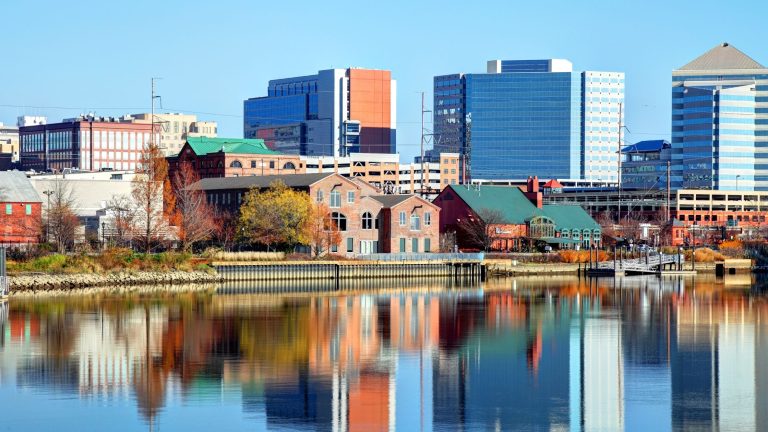Setting out on a hiking adventure is an exhilarating opportunity to connect with nature, push your limits, and discover breathtaking landscapes.
As someone who has hiked the Camino de Santiago across Northern Spain twice, I know how your choice of equipment can make the difference, all to ensure you’re prepared for the terrain and the weather, all while enjoying the view and company of others sharing the trail with you.
Footwear
Hiking Boots or Shoes
Your choice of footwear can make or break your hiking experience. Investing in a high-quality pair of hiking boots or shoes is paramount. Look for options that offer support, durability, and comfort. Waterproof and breathable materials are ideal to keep your feet dry and comfortable in various weather conditions. Consider the terrain you’ll be hiking on; rugged trails might require sturdier boots, while well-maintained paths could be navigated with lighter hiking shoes.
Socks
High-quality hiking socks can significantly improve your comfort levels. Opt for moisture-wicking, cushioned socks to prevent blisters and ensure comfort over long distances. Wool or synthetic blends are excellent choices, as they manage moisture and provide insulation even when wet.
Clothing
Layering System
The key to staying comfortable on the trail is layering. This system allows you to regulate your body temperature by adding or removing layers as needed. Start with a moisture-wicking base layer to keep sweat away from your skin. Merino wool or synthetic materials are excellent choices. Add an insulating layer, like a fleece or down jacket, for warmth. Finally, top it off with a waterproof and windproof outer layer to protect against the elements. Look for jackets with ventilation options to prevent overheating.
Convertible Pants
Convertible pants that can be turned into shorts are versatile and practical. They allow you to adapt to changing temperatures and conditions. These pants often come with multiple pockets, providing convenient storage for small items.
Hat and Gloves
A wide-brimmed hat for sun protection and a warm hat and gloves for colder climates are essential accessories. Choose a hat with a neck flap for sun protection, and opt for gloves that provide warmth and dexterity.
Backpack

Daypack
For day hikes, a lightweight and comfortable daypack with a capacity of 20-30 liters should suffice. Ensure it has padded shoulder straps and a hip belt for even weight distribution. Look for packs with multiple compartments to keep your gear organized and easily accessible.
Hydration System
Staying hydrated is crucial, so choose a backpack with a built-in hydration system or space for water bottles. Aim for at least 2-3 liters of water capacity. Hydration bladders with drinking tubes allow for hands-free sipping, making it easier to stay hydrated on the go.
Navigation
Map and Compass
Even if you have a GPS device, always carry a physical map and a compass as a backup. Knowing how to use them is equally important. Topographic maps provide detailed information about the terrain, helping you navigate more effectively.
A GPS device or a smartphone with offline maps can be invaluable for navigation. Ensure your device is fully charged, and consider carrying a portable charger. Preload maps and waypoints before your hike, and familiarize yourself with the device’s features.
Safety and First Aid
First Aid Kit
A well-stocked first aid kit is a must. Include bandages, antiseptic wipes, pain relievers, blister treatment, and personal medications. Customize your kit based on the length and difficulty of your hike, and ensure you know how to use each item.
Multi-tool or Knife
A multi-tool or knife can be helpful for various tasks, from preparing food to making minor gear repairs. Look for tools with scissors, pliers, and screwdrivers for added versatility.
Food and Nutrition
Trail Snacks
Pack lightweight, high-energy snacks like nuts, dried fruit, energy bars, and jerky to keep your energy levels up. These snacks provide a quick source of calories and nutrients, helping to sustain your energy throughout the hike.
Meals
For longer hikes, consider lightweight, easy-to-prepare meals. Dehydrated or freeze-dried meals are popular choices among hikers. These meals require minimal preparation and can be rehydrated with hot water. Bring a portable stove and fuel to cook hot meals on the trail.
Hydration
Water Filtration System
In addition to carrying water, it’s wise to have a water filtration system or purification tablets. Natural water sources can be contaminated, so filtering or purifying water is essential for preventing illness. Portable water filters, UV purifiers, and chemical tablets are all effective options.
Electrolyte Supplements
Hiking can lead to significant electrolyte loss through sweat. Carry electrolyte supplements or hydration tablets to replenish essential minerals and maintain proper hydration levels. These supplements can help prevent cramping and fatigue.
Odds and Ends

Trekking Poles
Trekking poles can enhance stability and reduce the impact on your joints, especially on uneven terrain. Look for adjustable poles with comfortable grips and wrist straps.
Headlamp or Flashlight
A headlamp or flashlight with extra batteries is essential for early morning or late evening hikes. Headlamps allow for hands-free illumination, making them ideal for nighttime navigation or camping in the dark.
Personal Items: Tailoring Your Pack
Personal Identification and Money
Always carry personal identification, such as a driver’s license or passport, and some cash in case of emergencies. A small, waterproof pouch can keep these items safe and dry.
Camera or Smartphone
Capture the beauty of your hike with a camera or smartphone. Ensure you have enough storage space and battery life to document your adventure. A lightweight tripod or selfie stick can help you take stable photos.
Environmental Responsibility: Leave No Trace
Trash Bags
Carry small trash bags to pack all your waste, including food wrappers, tissues, and other litter. Practicing Leave No Trace principles ensures that natural areas remain pristine for future hikers.
Biodegradable Soap
If you need to wash dishes or yourself, use biodegradable soap to minimize your impact on the environment. Avoid using soap directly in water sources, and dispose of soapy water at least 200 feet away from streams and lakes.
Popular Hiking Destinations in North America

1. Yosemite National Park, California, USA
Yosemite National Park is a hiker’s paradise, known for its stunning granite cliffs, waterfalls, giant sequoias, and diverse ecosystems. The park offers a variety of trails catering to all skill levels.
Must-Try Trails:
- Half Dome: A challenging 14-16 mile hike that requires a permit and features a strenuous climb with cables to assist you in reaching the summit.
- Mist Trail to Vernal and Nevada Falls: A moderately strenuous 7-mile round trip that takes you past two spectacular waterfalls.
- Yosemite Falls Trail: A challenging 7.2-mile round trip that offers breathtaking views of North America’s tallest waterfall.
2. Banff National Park, Alberta, Canada
Banff National Park, located in the heart of the Canadian Rockies, is renowned for its stunning alpine scenery, turquoise lakes, and abundant wildlife. The park offers a wide range of hiking opportunities, from easy walks to challenging backcountry treks.
Must-Try Trails:
- Plain of Six Glaciers: A moderate 8.6-mile round trip that offers stunning views of glaciers and Lake Louise.
- Johnston Canyon: An easy 3.7-mile round trip through a canyon with beautiful waterfalls and lush surroundings.
- Sentinel Pass via Larch Valley: A challenging 7.1-mile round trip that rewards hikers with panoramic views of the Valley of the Ten Peaks.
3. Great Smoky Mountains National Park, Tennessee/North Carolina, USA
The Great Smoky Mountains National Park is known for its lush forests, diverse wildlife, and mist-covered peaks. It’s one of the most visited national parks in the United States and offers a wide range of hiking trails.
Must-Try Trails:
- Alum Cave Trail to Mount LeConte: A strenuous 11-mile round trip with stunning views and unique geological features.
- Charlies Bunion: A moderate 8-mile round trip with breathtaking views of the Smokies.
- Andrews Bald: An easy 3.6-mile round trip that leads to a beautiful grassy bald with panoramic mountain views.
4. Jasper National Park, Alberta, Canada
Jasper National Park, the largest national park in the Canadian Rockies, is known for its rugged mountains, glaciers, and abundant wildlife. The park offers many hiking trails, from short walks to multi-day backcountry adventures.
Must-Try Trails:
- Maligne Canyon: An easy 2.7-mile round trip that takes you through a stunning limestone canyon with waterfalls and unique rock formations.
- Sulphur Skyline Trail: A challenging 5-mile round trip that rewards hikers with panoramic views of the surrounding mountains and valleys.
- Skyline Trail: A strenuous 27-mile multi-day trek that offers some of the most breathtaking scenery in the Canadian Rockies.
5. Zion National Park, Utah, USA
Zion National Park is famous for its towering red cliffs, narrow canyons, and unique rock formations. The park offers a variety of hiking trails, from easy walks to challenging scrambles, for all skill levels.
Must-Try Trails:
- Angels Landing: A strenuous 5.4-mile round trip that features a thrilling climb with chains to assist you in reaching the summit, offering stunning views of Zion Canyon.
- The Narrows: A unique hike through the Virgin River, where you’ll wade through water and navigate narrow slot canyons. The length of the hike can vary depending on how far you choose to go.
- Observation Point: A challenging 8-mile round trip that offers panoramic views of Zion Canyon from one of the park’s highest points.
Setting Priorities
Proper preparation can make your hiking adventure safer, more comfortable, and more enjoyable. By investing in quality gear and packing thoughtfully, you’ll be ready to tackle any trail confidently. Remember that the right footwear is the foundation of your comfort, while a well-planned layering system ensures you can adapt to changing weather conditions. A reliable backpack will keep your essentials organized and accessible, and navigation tools will help you stay on track.
Safety should always be a priority, so a well-stocked first aid kit, multi-tool, and emergency shelter can be lifesavers in unexpected situations. Fuel your journey with nutritious snacks and meals, and don’t forget the importance of hydration. Trekking poles, headlamps, and sun protection are additional essentials to make your hike smoother and more enjoyable.
Personalize your pack with identification, a camera, and a journal to enrich your experience. Lastly, always practice environmental responsibility by following Leave No Trace principles to preserve the beauty of nature for future generations.
As you gear up for your next hiking adventure, take the time to plan and prepare. The effort you put into packing the right essentials will pay off as a safer, more enjoyable, and memorable journey. So lace up your boots, grab your pack, and confidently hit the trails—nature is waiting for you!






